Page Table of Contents
Reviews and Awards
| ⏱️Duration: | 3-5 minutes reading |
| 🎯Goal: | Find whether installing Windows 11 delete programs |
| 💻Supported OS: | Windows 11/10/8.1/8/7 and older Windows OS, and Windows Servers |
| 🧰Tools: | Windows update or installation assistant, l Windows 11 ISO, USB, PC file transfer software |
To learn how to update or install Windows 11 on your PC without any risk of losing programs or data, you can follow the step-by-step instructional tutorial provided here. While reading it entirety can provide a more comprehensive understanding. Rest assured that the solutions provided are efficient and secure.
Will Installing Windows 11 Delete Programs?
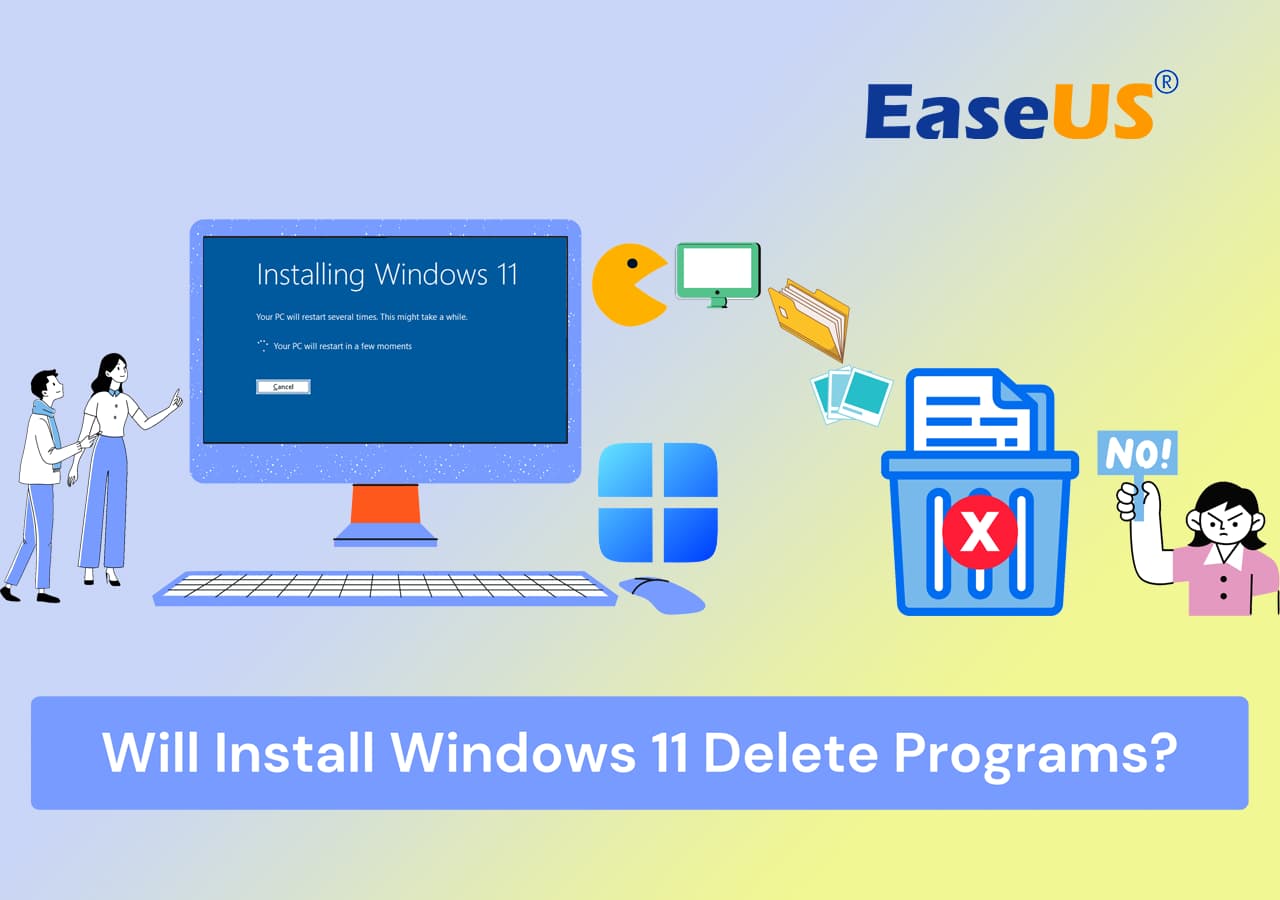
It depends on how you install or update to Windows 11, which means what method you're using. For better understanding, let's learn about two common methods so that you'll clearly understand whether installing Windows 11 deletes the programs on your PCs.
#1. Using Windows Update or Windows 11 Installation Assistant
This option won't affect your installed programs, settings, files, and other data. Suppose your existing installed operating system is Windows 10, and your PC meets Windows 11 requirements/criteria. In that case, you can update to Windows 11 using the Windows Update option from settings easily, either you can choose Windows 11 Installation Assistant. Rest assured, all your programs and data will remain safe. However, it would be good to take proactive actions to back up your data due to potential loss.
#2. Using Windows Installation Media with Windows 11 ISO File
If you use Windows Installation Media with the Windows 11 ISO file to install Windows 11 on your computers, the installation process will impact installed programs, personal data, and computer settings. In this case, there is a risk of programs and data being deleted. Therefore, creating a data backup is unavoidable before installing Windows 11 with an ISO file. In this matter, EaseUS Todo PCTrans is the best-ever option to preserve your data, including programs and settings and restore quickly.
How to Avoid Programs from Being Deleted By Windows 11 Installation?
You must take a few proactive steps to prevent programs from being deleted by Windows 11 installation. We'll suggest useful tips, suitable methods and proactive actions. So, let's discover tips, techniques, and guides to avoid data loss and bypass any possible risks.
Tip 1. Update to Windows 11 via Windows Update Settings or Windows Installation Assistant
If you want to update to Windows 11 without losing programs and data, we suggest you use Windows Update or Windows installation assistant. Both options are convenient to upgrade and install Windows 11 on your PC without worrying about data loss. Follow the below guides and steps.
Guide 1: Update to Windows 11 via Windows Update
Before updating to Windows 11, you should check whether your PC completes the minimum system requirements to run Windows 11. You can download the Windows PC Health Check tool for this action. If your PC really meets the requirements, you can occasionally find the option in Windows Update to update Windows 11.
Step 1. Open Windows Settings. Simply press the Windows+I buttons simultaneously.
Step 2. Click "Update & Security".
Step 3. Click "Check for updates".
Step 4. Click the "Download and install" and then "Restart Now" button.

By following these steps, Windows 11 will be installed on your computer without deleting programs/apps and other valuable data.
If you think this method is helpful, share to help more people online:
Guide 2: Use Windows 11 Installation Assistant
You can also use the Installation Assistant to update any version of Windows 10 to Windows 11 without losing data. Follow the below steps to update from Windows 10 to Windows 11 through Windows 11 Installation Assistant:
Step 1. Visit the official Microsoft website.
Step 2. Download "Windows 11 Installation Assistant".
Step 3. After downloading it, launch the Windows11InstallationAssistant.exe file.
Step 4. Click "Accept and install" to proceed and follow the on-screen prompts/steps.

That's it. Windows 11 will be installed. The process may take some time, so wait a while and follow on-screen instructions.
Tip 2. Create Backups of Installed Programs Before Installing Windows 11
If you're planning to perform a fresh installation of Windows 11 using Windows installation media, it's essential to safeguard your valuable installed programs. Follow this guide to safely get Windows 11 on your PC without losing any programs:
1. Create Backups of Installed Programs
Ensure the protection of your essential installed programs, such as Office, Adobe, Netflix, Quickbooks, and more, by using EaseUS Todo PCTrans with its Backup & Restore feature. This will allow you to create backups of all your programs in advance, ensuring their safekeeping during the Windows 11 installation process. You can restore your programs/data quickly after successfully installing Windows 11.
Follow the steps to create a backup using EaseUS Todo PCTrans:
Step 1. Launch EaseUS Todo PCTrans on your computer. Click "Data Transfer" on the main screen, select "This is Old PC" and click "Next."
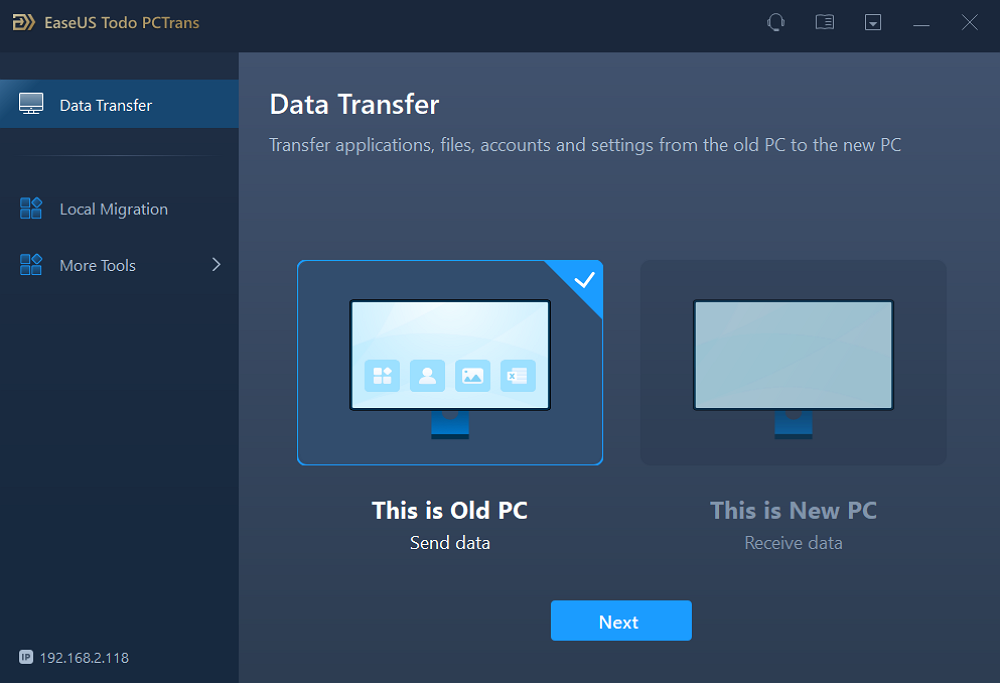
Step 2. Choose the "Transfer via backup" method and click the "Next."
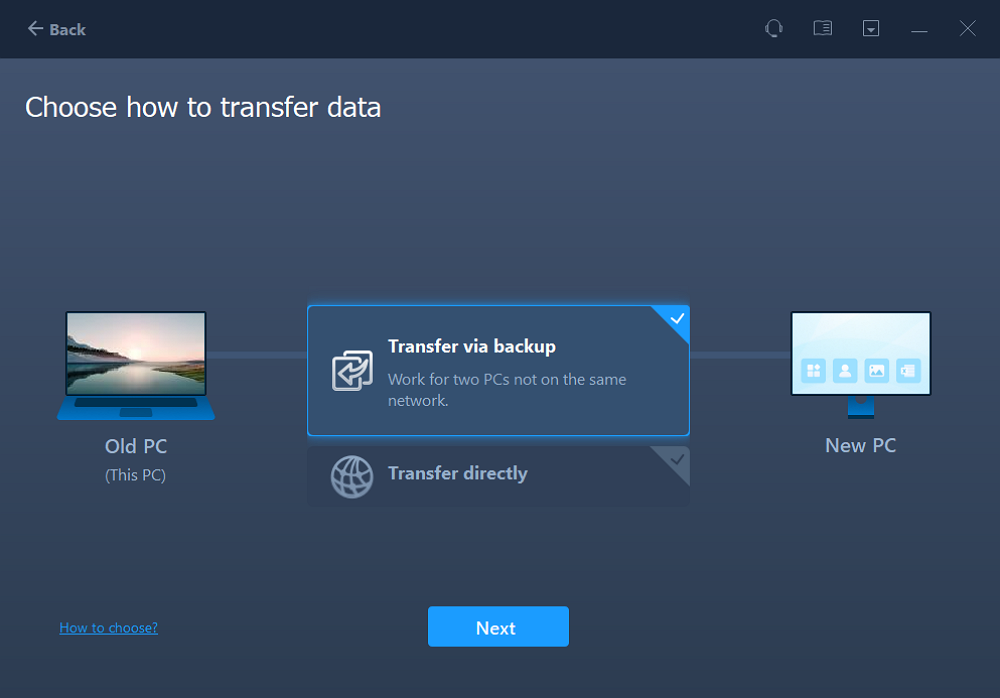
Step 3. Confirm the backup file name and backup location (Please save your files to a location where the new PC can access, like an external hard disk or shared network location.)
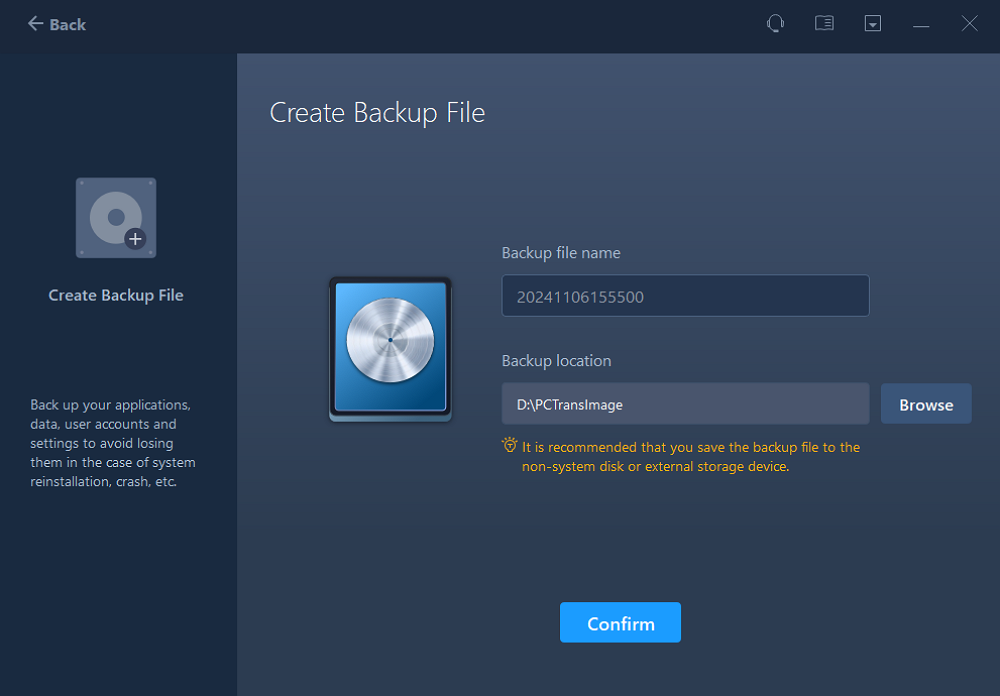
Step 4. Tick the Applications, Files, and Accounts that you wnat to backup. Click the "Backup" option to execute the process.
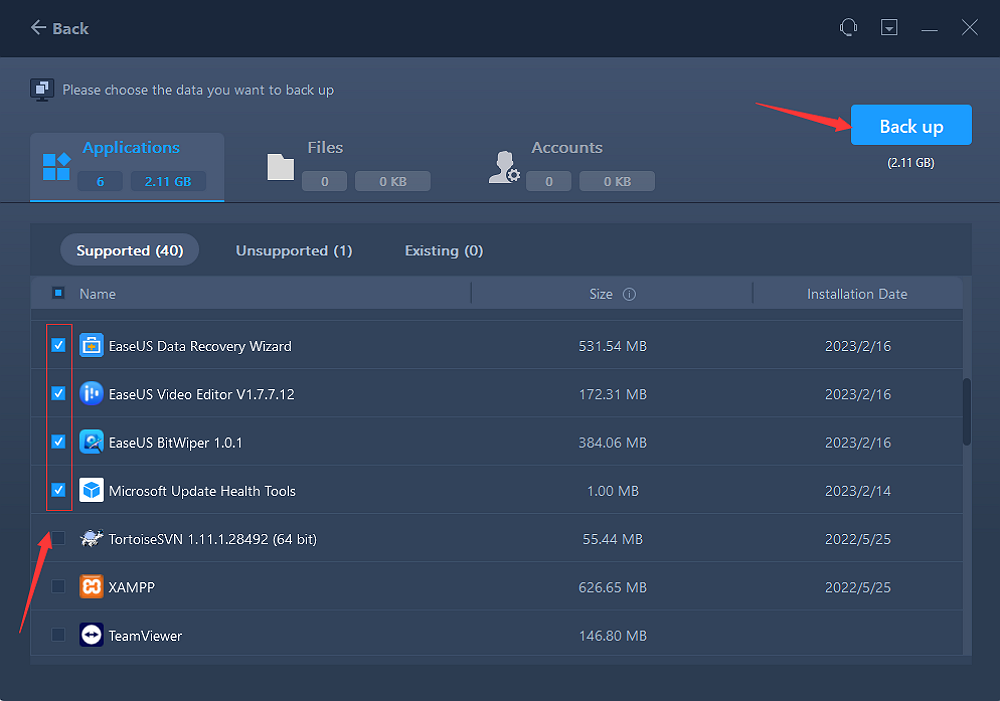
Step 5. Wait patiently till the backup procedure is done.

2. Create Windows 11 Installation Media and Install Windows 11
Once you have created backups of your installed programs, proceed to create Windows 11 installation media. For this method, you need a license to install Windows 11 and a blank USB minimum of 8 GB of space to create a bootable disc. Follow the steps below to ensure a seamless installation of Windows 11 on your PC:
Step 1. Connect the USB drive to your PC/Laptop. Visit the official Microsoft website and download "Create Windows 11 Installation Media".
Step 2. Run the MediacreationtoolW11.exe file, and if prompted by (UAC), click "Yes." The tool may take a few moments to open, so kindly wait until the Setup wizard is displayed.
Step 3. Click on "Accept." By default, the Media Creation Tool will automatically select the appropriate edition and language based on your system configuration. If you wish to switch the language, uncheck the "Use the recommended options for this PC" box.
Step 4. Click "Next" after choosing your options.
Step 5. Choose "USB flash drive" in the pop-up window that shows you to "Choose which media to use," and click "Next."

Step 6. You should choose your USB drive from the list of available drives and click "Next."
Step 7. Click "Finish."
3. Restore Backed Up Programs to Windows 11
After successfully installing Windows 11, it's time to restore all the valuable programs that you backed up earlier. To do this, download and install EaseUS Todo PCTrans, which will simplify the restoration process and ensure your programs are seamlessly transferred to the new Windows 11 environment.
Follow the steps:
Step 1. Lauch EaseUS Todo PCTrans on the target PC you want to restore the backup image, and choose "This is New PC" in the Data Transfer section. Click "Next".
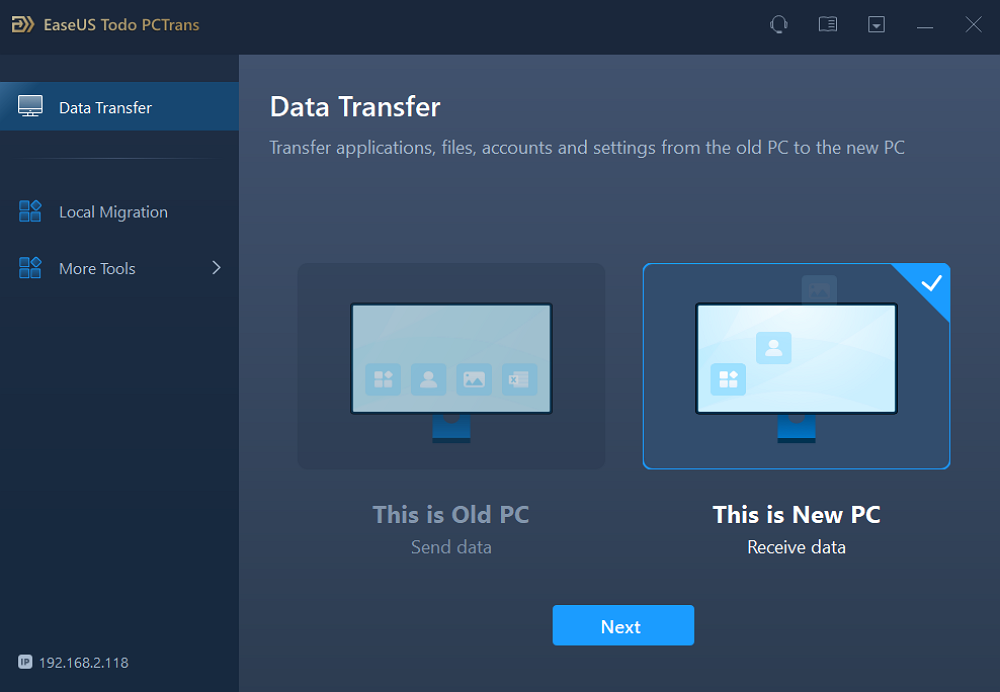
Step 2. Selcet "Transfer via backup" and click "Next."
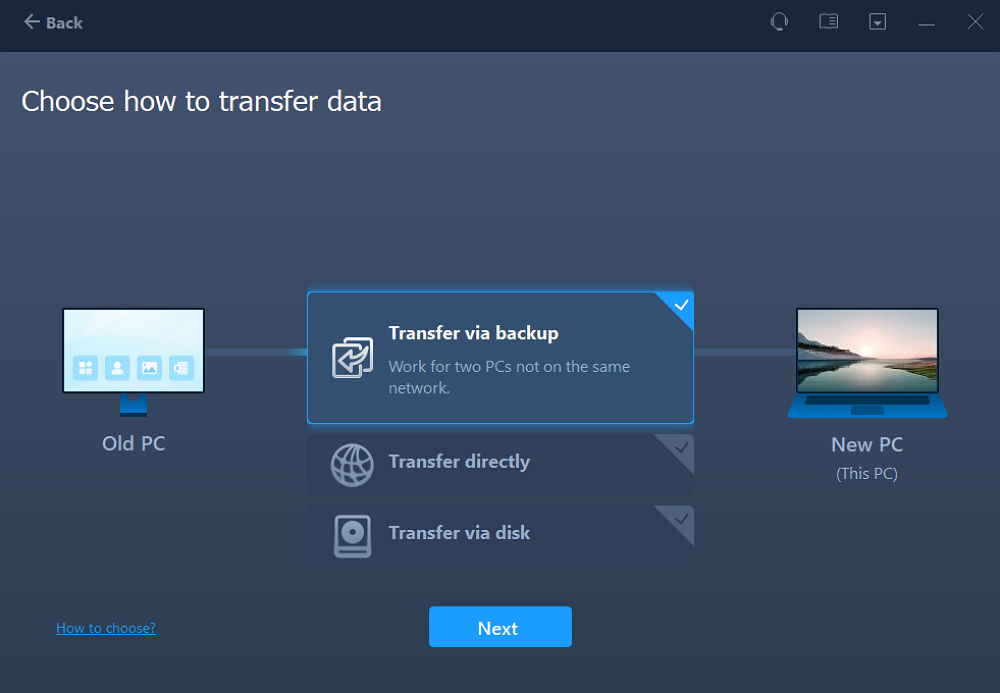
Step 3. Click "Browse" to navigate the Backup location where you stored your backup of files, apps, or settings.
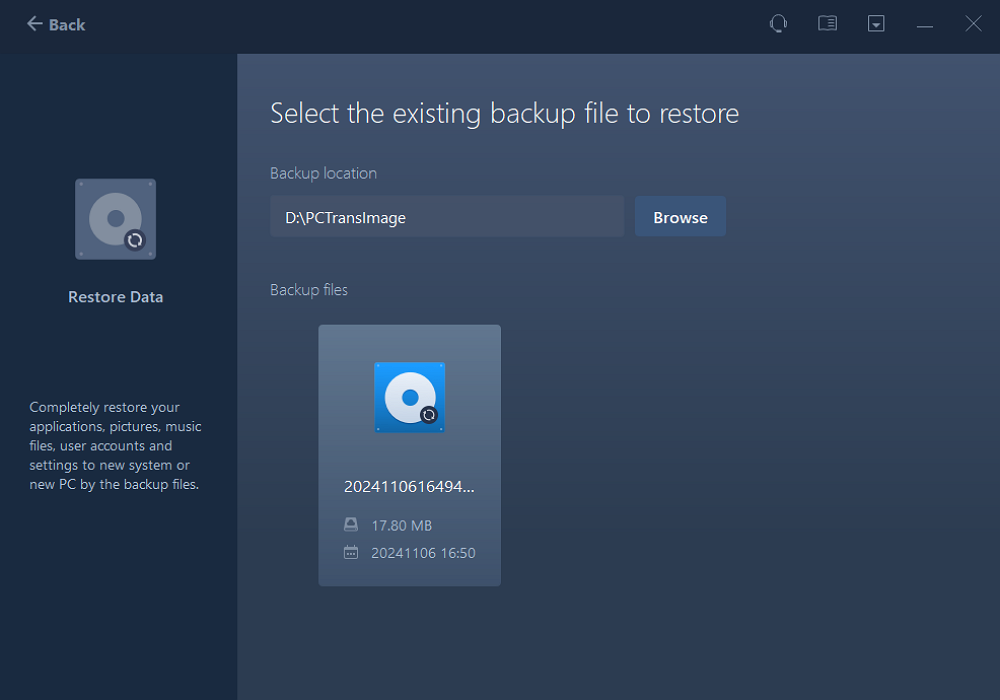
Step 4. Then, go to the Applications, Files, or Accounts sections to select the exact data, apps, or accounts settings you want to restore to the new device, and click "Restore."
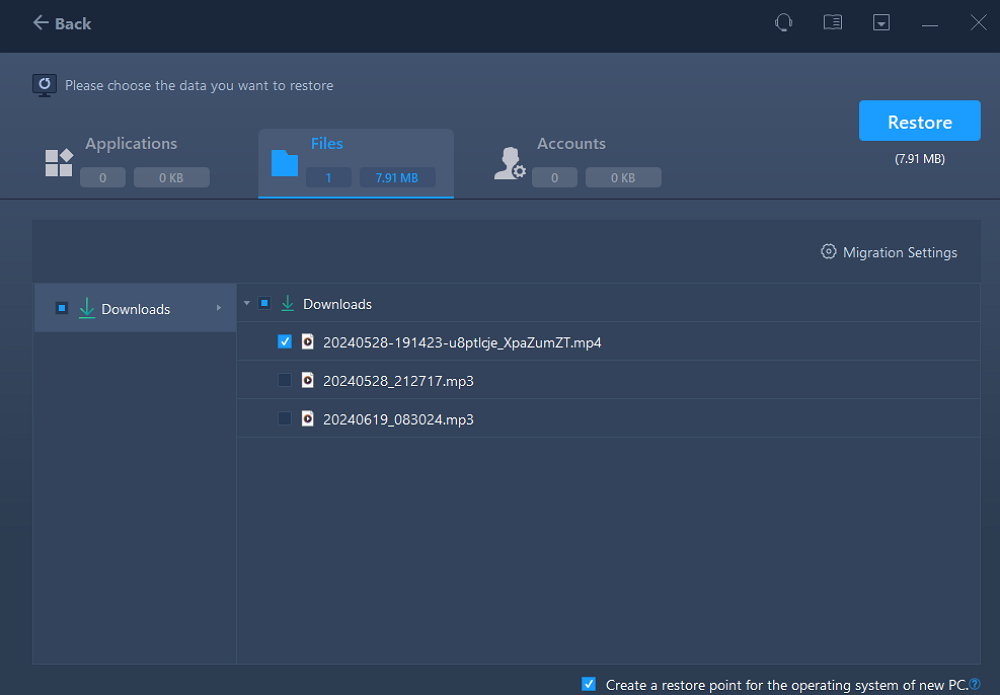
By following these steps and using EaseUS Todo PCTrans, you can confidently install Windows 11 via Windows installation media without the risk of losing any of your precious programs. Enjoy the upgraded operating system with all your essential software intact!
If this method helped you efficiently backup programs and install Windows 11 safely on your PC, share to help more people who have the same demand online:
Tips to Keep Data and Programs Intact Before Installing Windows 11
Before updating or installing Windows 11, it's essential to take precautions to preserve your valuable data and programs. We've compiled practical tips for Windows fans to ensure a smooth and worry-free process. By following these guidelines, you can confidently proceed with the Windows 11 update or installation:
1. Use Windows Update or Windows 11 Installation Assistant: To safely update without losing programs and data, use Windows Update or the Windows 11 Installation Assistant to get the latest Windows 11 version.
2. Create Backups of Valuable Data and Programs: Creating backups of all your essential data and installed programs is a useful practice to preserve data.
3. Check Compatibility and System Requirements: Verify that your PC meets the minimum system requirements for Windows 11.
4. Keep Sufficient Battery or Use a Stable Power Source: If you're updating a laptop or a portable device, ensure it has enough battery charge or connect it to a stable power source during installation. This prevents unexpected shutdowns, which can lead to data corruption or partial installations.
5. Remove Unnecessary Software: Uninstall any unnecessary or redundant software from your PC. This frees up space and streamlines the update process, reducing the risk of conflicts with existing applications.
6. Enable System Restore Point: Create a system restore point before initiating the update process. This allows you to revert to the previous state in case any issues arise during or after the installation.
Conclusion
The Windows 11 upgrade or installation process brings potential risks if backups of files and programs on the C drive are overlooked. The outcome hinges on the chosen installation method. Transitioning from Windows 10 via Windows Update or Installation Assistant is generally secure, though precautionary data backup is still wise. Conversely, a fresh Windows 11 installation using Installation Media and ISO file demands caution due to program and data loss; adopting EaseUS Todo PCTrans with Backup & Restore is recommended for safeguarding programs through advanced backups and easy recovery post-installation.
- Important
- Microsoft has confirmed that Windows 10 support will officially end on October 14, 2025. After this date, the system will no longer receive security updates, bug fixes, or technical support. To understand what this means for users, check our Windows 10 End of Support guide.
FAQs About Will Installing Windows 11 Delete Programs
Are you curious about the implications of upgrading to Windows 11 on your programs? Continue reading to find FAQs to address your concerns/queries.
1. What will you lose when upgrading to Windows 11?
The impact on installed programs and stored data depends on the installation method. If you use Windows Update or the Windows 11 Installation Assistant, your programs should remain intact. But, if you perform a fresh installation using Windows Installation Media with the Windows 11 ISO file, you risk losing installed programs and data.
2. Can I install Windows 11 and keep my programs?
You can install Windows 11 and keep your programs using Windows Update or the Windows 11 Installation Assistant for the update. But if you're doing a fresh installation of Windows 11 by Windows Installation Media or Windows 11 ISO file, it's advisable to create backups of your data before.
3. Will I lose my license if I upgrade to Windows 11?
Upgrading to Windows 11 from a genuine and activated Windows 10 doesn't lead you to lose your license. Microsoft has announced that existing Windows 10 users with genuine licenses can upgrade to Windows 11 for free.
About the Author
Updated by Sofia Albert
Sofia is an enthusiast of science and technology. With a passion for uncovering the latest tech innovations, she creates clear, engaging how-to guides that make technology accessible and enjoyable for all.
Written by Tracy King
Tracy became a member of the EaseUS content team in 2013. Being a technical writer for over 10 years, she is enthusiastic about sharing tips to assist readers in resolving complex issues in disk management, file transfer, PC & Mac performance optimization, etc., like an expert.
Reviews and Awards
-
EaseUS Todo PCTrans Free is a useful and and reliable software solution created to serve in computer migration operations, be it from one machine to another or from an earlier version of your OS to a newer one.
Read More -
EaseUS Todo PCTrans is by the folks at EaseUS who make incredible tools that let you manage your backups and recover your dead hard disks. While it is not an official tool, EaseUS has a reputation for being very good with their software and code.
Read More
-
It offers the ability to move your entire user account from your old computer, meaning everything is quickly migrated. You still get to keep your Windows installation (and the relevant drivers for your new PC), but you also get all your apps, settings, preferences, images, documents and other important data.
Read More
Related Articles
-
How to Transfer Windows 10 License to A New PC
![author icon]() Cici/2025/11/11
Cici/2025/11/11 -
Move Windows 11/10 Installed Apps & Programs to Other Drive
![author icon]() Tracy King/2025/11/11
Tracy King/2025/11/11 -
Program Won't Open When I Click It, Here Is How to Fix🏆
![author icon]() Tracy King/2025/09/28
Tracy King/2025/09/28 -
Top 5 Best File Transfer Apps for PC in 2025 [Review with Pros & Cons]
![author icon]() Tracy King/2025/10/12
Tracy King/2025/10/12